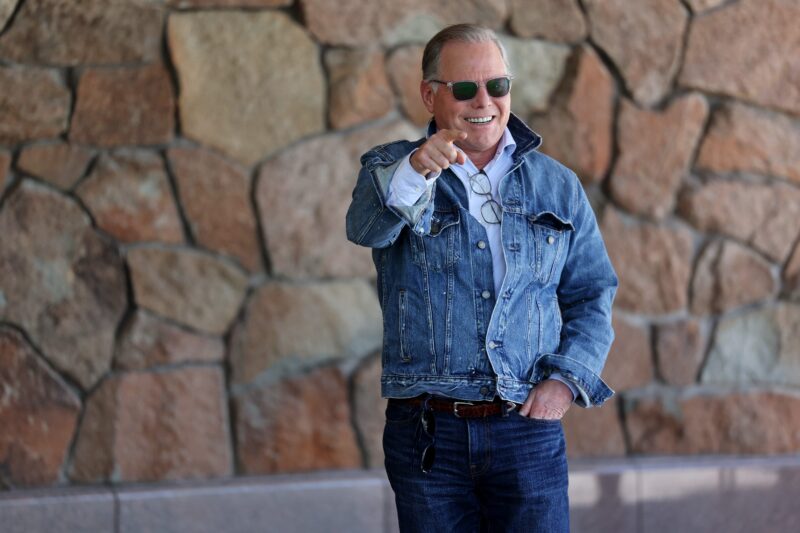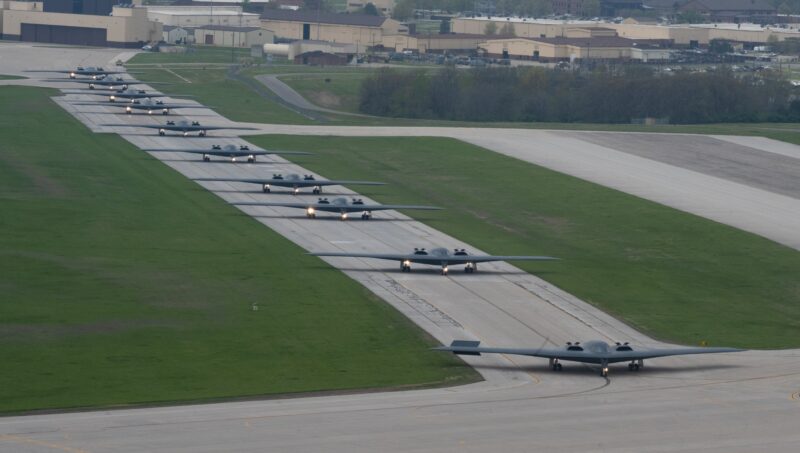- The concept of the döppelganger was central to Jordan Peele’s latest horror hit, “Us” – and seamless visual effects were needed to bring that concept to life.
- Here, “Us” VFX supervisor Grady Cofer explains how his team at Industrial Light and Magic (ILM) made the movie’s döppelganger scenes so realistic.
- ILM is the legendary VFX studio behind other blockbusters such as “Avengers: Infinity War,” “Black Panther,” and “Aquaman.”
- Visit INSIDER’s homepage for more stories”
Following is a transcript of the video.
– [Narrator] Jordan Peele’s “Us” had the best opening of any original horror movie in box office history. It also enjoyed glowing reviews, with critics raving about Lupita Nyong’o’s dual performance. But how exactly did she share scenes with herself? To find out, we spoke to Oscar-nominated VFX supervisor Grady Cofer. He explained how his team at Industrial Light and Magic made the doppelgänger scenes in “Us” so realistic. Plus, he let us in on how the film’s most memorable shots came to life and what they really mean about the movie. Beware, some spoilers ahead. Grady’s studio, ILM, has worked on a long list of blockbusters including “Black Panther,” “Aquaman,” and “Avengers: Infinity War.” While those films are known for the scope of their VFX, “Us” required a lighter touch.
– [Grady] You know, there’s no robots. There’s no kind of big space battle at the end, you know, all of the kind of big summer blockbuster kind of movie tropes that we’re kind of used to doing, that’s kind of in our wheelhouse, this isn’t a movie about kind of showy, kind of grandiose effects. In fact, they all kind of live in the world of subtlety.
– [Narrator] In a film where pretty much every actor played two roles, ILM couldn’t rely on the split screen technique long used in twin movies going back to the original “Parent Trap.” Instead, they went through the exacting process of piecing together parts of different shots, often doing extensive head and face swaps. So in some scenes, you might be seeing a hybrid of, say, Winston Duke’s face with parts of his stunt double’s body. To get all the footage that ILM’s artists would need for source material, the actors had to perform scenes twice, once for each of their roles. Lupita, for instance, would first play Red with her body or photo double playing Adelaide.
- [Grady] When that was done, they would switch places, right? She would go to costume and wardrobe, and everyone would reset. We took very, very careful notes about what the camera was doing, what the light was doing, and we would essentially recreate the shot, right? So in effect, you're almost making the movie twice. Where it really becomes a challenge is when the characters are interacting, and that happened a lot.
- [Narrator] The most dramatic of these scenes is the final battle between Red and Adelaide.
- [Grady] The climax of this movie is not only the confrontation between the two versions of Adelaide, but it's also this kind of pinnacle moment in their past when they were both these expressive kind of artists, and they were expressing what they were going through, through dance. Even the fight is a dance, and so this was extremely careful and, like, methodical choreography of how they would interact together. We really had to plan it out, you kind of figure out, OK, who is kind of the hero of this shot meaning who is the one who's kind of controlling the action most.
- [Narrator] Based on those factors, they decide which parts of the shot would need to get swapped, painted, or grafted in postproduction.
- [Grady] It often was a head replacement, or sometimes we had to have the arm of one character because it was, you know, attaching to the neck of Lupita.
- [Narrator] After weeks of rehearsing, they shot the fight over a period of two days.
- [Grady] And then they kind of end in some kind of embrace, this incredibly difficult shot to pull off. I just have really good artists at ILM, people that were rotoing parts of bodies. They were painting in a lot of things there were occluded, and they kinda pieced it all back together, and at the end of day, you know, you just had to buy it. These were two people that were actually grappling together.
- [Narrator] They filmed the fight inside their underworld set, which was designed with movable walls that could be rolled away at any point to reveal a green screen. This meant that ILM could digitally extend the hallway, making it look like an endless tunnel whenever Jordan wanted.
- [Grady] But he waited till this one moment at the very end, at the kinda pinnacle of that fight, and you come behind both of them, and you see that hallway kind of extend to infinity. And of course at the same time, the song, that "5 On It" kind of remix, it's like its loudest moment, you know, and the whole theater was kind of shaking.
- [Narrator] It's a hair-raising climax. Of course, we learned soon after that that this wasn't the first time Red and Adelaide faced off. They had their first encounter as little girls inside the Hall of Mirrors. For this flashback, Jordan was clear that he didn't want the two girls to look like mirror images of each other.
- [Grady] Instead of having them face each other, right, they've actually got to go back-to-back. There's something really uncanny about looking at the back of someone's head like that, so he kind of holds on that for a second.
- [Narrator] Adelaide then turns around, and Red reaches out to strangle her. At first, they tried shooting this struggle with the actor, Madison Curry, opposite a photo double. But to get a truly terrifying shot, Curry needed something that she could really grab onto. So they had her grip a paper cup, which was wrapped in green so that it could get digitally replaced later on.
- [Grady] Different action, in that case we are using different hands than the arms. That is actually a head replacement as well. You wouldn't know it, but it's another kind of part of the shot that makes it slightly unnerving, that you're actually seeing something that's kind of pieced together.
- [Narrator] Peele is known for his attention to all of these tiny visual details. Throughout "Us," he slipped in imagery of mirrors, breaking glass, and refracted light, evoking the film's central theme of duality. Grady's team worked with the director to sneak these clues into every frame. One example is when Adelaide is pushed into a glass table, and her face lines up perfectly with Red's reflection in the glass. Jordan noticed this splitting image when Lupita was playing the role of Red. So they framed down on her reflection, and ILM superimposed it right next to Adelaide's face.
- [Grady] What really drew me to this material was that the premise was so intricately tied to visual effect. For this story and this movie to work, all of that has to be incredibly seamless.










